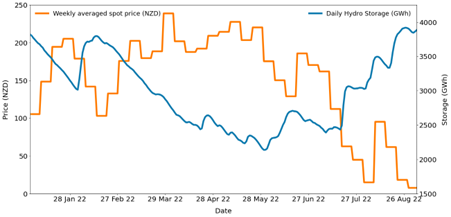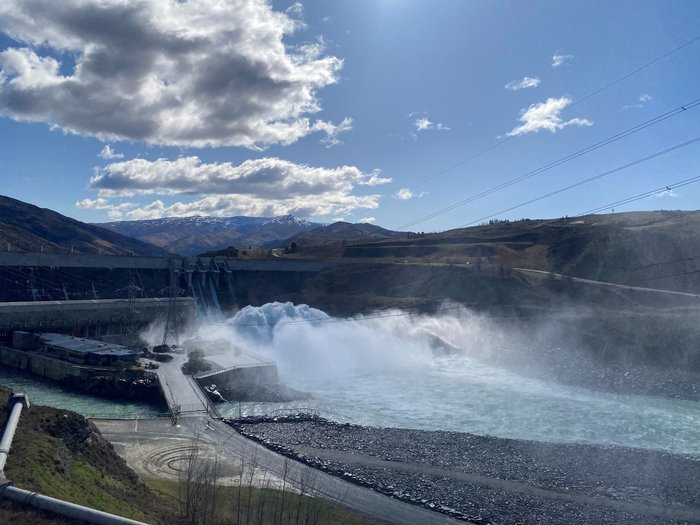Eye on electricity
How hydro storage impacts spot prices
What influences spot pricing and hydro storage?
- Consumers
- Distribution
- Generation
- Prices
What is spot pricing?
The ‘spot price’ of electricity is the wholesale price. Electricity in New Zealand is sold via auctions every 30 minutes. Generators (who produce electricity) offer a particular amount of electricity at a certain price to retailers (who purchase electricity on behalf of their customers).
The electricity System Operator (Transpower) controls each auction and accepts all offers that combine to meet the expected demand. The final offer accepted sets the ‘spot price’. Every offer accepted is then paid the ‘spot price’ for their electricity.
What influences spot pricing?
The spot price depends on supply and demand within the electricity market. The key factors are the expected demand for electricity and the cost of producing the electricity eg, what proportions of hydropower, wind and thermal fuels are used. If a lot of renewable resources are used, like hydro and wind, then spot prices tend to be lower as they are cheaper sources of electricity. If more gas and coal is used, then spot prices will be higher as they are expensive to run.
The weather has a large impact. It influences the supply of low-cost renewable electricity generation eg, the amount of rainfall for hydro reservoirs and windspeed for wind farms. The weather also influences the demand for electricity, with a cold snap pushing up demand and increasing spot prices, while hotter weather sees demand and spot prices drop.
How does hydro storage influence spot prices?
Hydro generators have reservoirs that store water behind a dam for electricity generation. When reservoir levels are high, hydro storage increases and pushes the spot price of electricity down. When reservoir levels are low, spot prices tend to be higher to help conserve water.
How has hydro storage performed this year?
Hydro storage has fluctuated this year, see the blue line in Figure 1. In January 2022 hydro storage declined sharply as there was a net outflow of water from hydro reservoirs. Yet in February there was a steep increase in hydro storage due to high rain flow. This was followed by a near constant decline in hydro storage until June from dry weather conditions and correspondingly low reservoir levels.

Related News
Centralised wind and solar forecaster contract awarded
The Electricity Authority has awarded a contract to provide centralised wind and solar forecasting services to DNV Services.
First compliance reports for retailers under Consumer Care Obligations due 30 September
The Electricity Authority is notifying electricity retailers that their 2024/25 compliance reports for the Consumer Care Obligations are now available to compl…
Electricity Authority appoints Daylight to deliver new comparison and switching service
The Electricity Authority has appointed innovative technology and creative studio Daylight to develop a new energy comparison and switching service.
